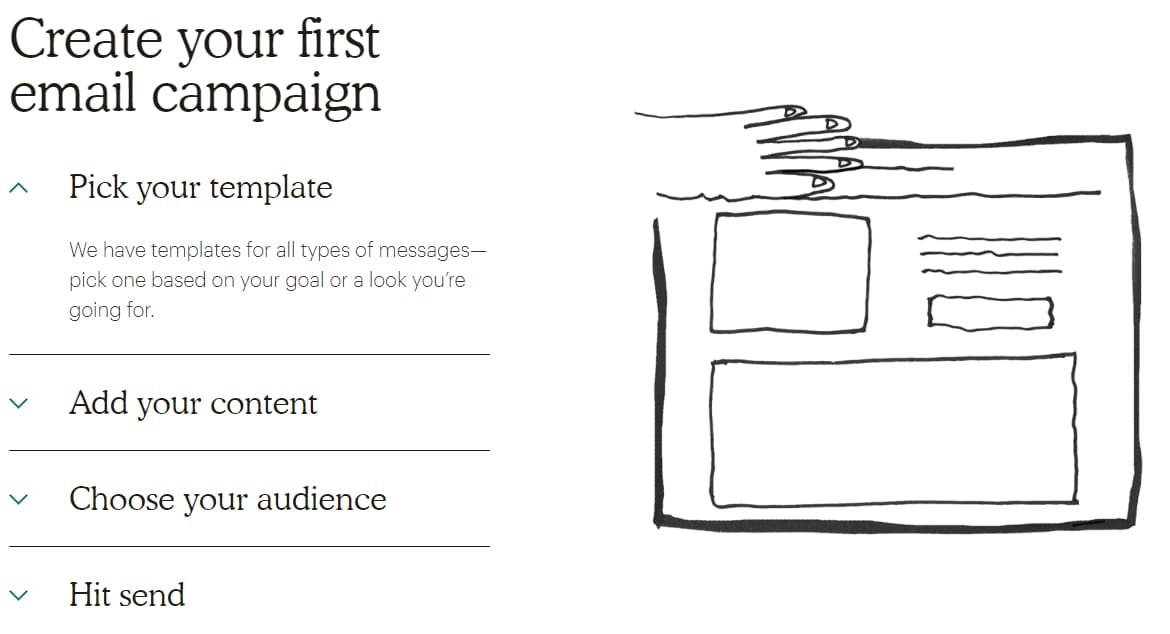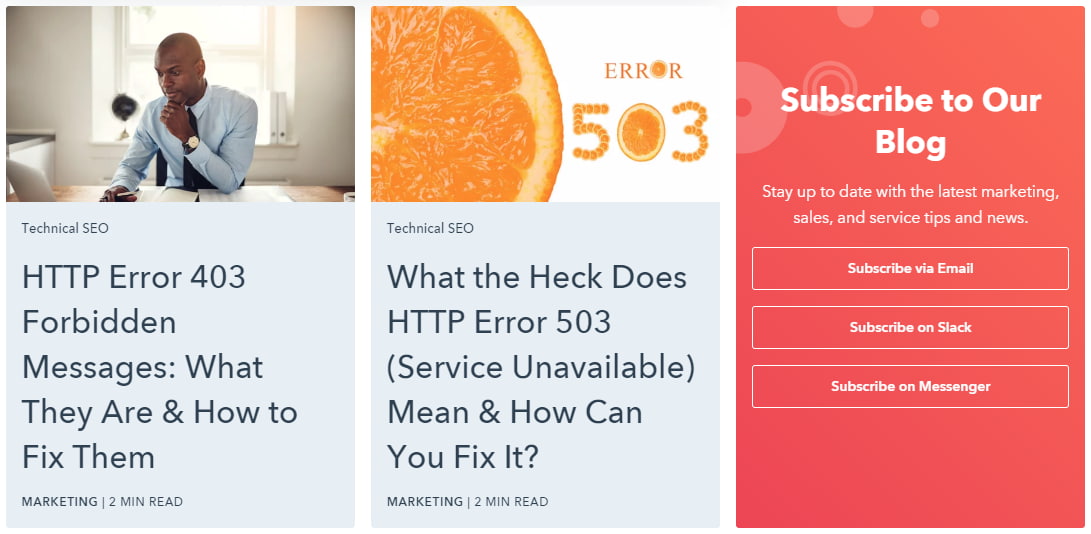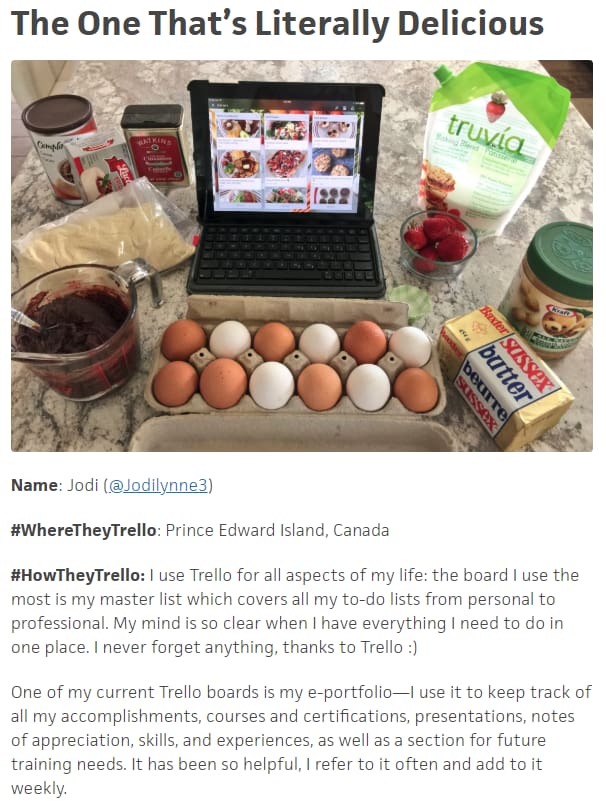
You might have the best SaaS product in the world, but without a solid content strategy behind it, it ain’t worth jack. Blogging is crucial for SaaS brands. It streamlines user onboarding, and helps you craft a user story with credibility.
But writing SaaS blog posts require a different tact to the usual style. It’s easy to get lost in the quagmire of jargon-heavy product promo. Your blogs should always be written with your target market in mind, putting your reader first.
SaaS blogs should make your product accessible, helping new customers understand your product while assisting existing ones get the most out of it.
Read on to discover how to do exactly that, and write blog posts that enhance your SaaS brand and make your product appeal to your customers.
By clear as crystal, not clear as mud
I’ve encountered dozens of SaaS products in my line of work, covering every niche under the sun. From visual multiplatform content calendars to online SMS services for businesses, I’ve seen it all.
More often than not, the descriptions for these products are annoyingly vague. Replete with highfalutin language and industry buzzwords, they make perfect sense for the brand, but are unintelligible for the consumer.
Unfortunately, while these descriptions sound good in an elevator pitch, they don’t adequately explain what the product actually does for the average customer. This knowledge gap prevents people from engaging with the product, losing you sales.
If you want to write an explainer blog post that engages your customer, you need to make it clear exactly what your SaaS product does. So jettison the jargon and ditch the double Dutch — be concise and readable, and your customers will be hooked.
For an example of accessible, digestible content, check out Mailchimp’s blog. You likely already know Mailchimp as the email marketing tool of choice for brands and solopreneurs alike. But beyond that, Mailchimp also provides a comprehensive marketing blog that’s well worth a visit.

Image Mailchimp
As well as being super-useful, the Mailchimp blog is also very readable. It runs through the most basic marketing concepts in concise, readable language — perfect for digital marketing novices struggling to make sense of new topics (and, coincidentally, their ideal target market too).
Let’s get visual
It’s often said that 65% of the population are visual learners. But in my experience, even those that claim they aren’t find visual aids wildly beneficial when learning a new concept.
This is especially true in the SaaS industry. explaining a SaaS product requires clarity and concision, and using visuals is the perfect complement to your SaaS blog post.
Videos are the obvious option here. A short animated clip guiding the viewer through your product is one of the best ways to explain it to your audience.
While videos are no doubt effective, so too are simple explainer graphics. Think of the best customer journey charts you’ve seen. They all use vibrant colours, engaging imagery, and clear meaning to make the buyer’s journey easy to visualise.
You don’t need to be a graphic designer to achieve visual success either (although it helps). Spend a couple of hours getting to grips with a graphic design tool such as Canva (other brands are available), and you’ll be able to whip up a slick graphic in no time.
Softly, softly, catchee customer
The SaaS industry is competitive. Even if your product occupies the smallest niche in the world, you’ve likely still got a dozen competitors all vying for the same market.
With competition like that, it’s tempting to go for the hard sell. But savvy shoppers know when they’re being sold to, and they’ll clam up quicker than you can say “buy now!”
Consumers want to make a purchase on their own terms, based on their own research. This process doesn’t need to exclude you though. Provide them with the materials they need to do this: product feature highlights, practical applications of your product, testimonials from satisfied customers — the list goes on.
As well as focusing on your SaaS product’s features and benefits, create content that solves problems they have by finding your customers’ pain points.
The key to this tactic is keyword research.
Although they have less search volume, customers who type descriptive phrases of more than three words (long tail keywords) into search engines are typically looking for answers to specific problems. This subtle change in intent means the conversion rates for this type of search query is much higher than it is for short tail keywords (one or two words) associated with your product.
The good news is that it’s super easy to create content tied to long tail keywords.
Fire up a keyword tool such as Ahrefs (or a free alternative like Ubersuggest. Enter your primary keyword into the keyword explorer tab of Ahrefs or the front page of Ubersuggest. In this example, we used ‘email automation’, which returned long tail keywords like:
- What is email automation
- How does email automation work
- How to use email automation
- How to do email automation
- How to set up email automation
As you can see, long tail keywords are usually questions. These phrases highlight what your customers are searching for online, and provide easy inspiration for your next SaaS blog post. Write blog posts that solve your audience’s problems — and hey, if your product happens to help them with that, shout about it.
You’re not just a brand — you’re an industry authority
The typical SaaS product customers are entrepreneurs or businesses. They want thought leadership and business insight, and your brand is perfectly placed to deliver it.
Make the most of your unique position in a niche or industry and share knowledge and best practice. Leverage user data to create high-authority reports and whitepapers.
For an example of industry authority done right, look no further than sales marketing, and service SaaS brand HubSpot.

Image HubSpot
I’ve used HubSpot’s blog countless times during my content research, returning to it time and time again for insightful, useful blogs spanning everything from conversion rate optimisation to social media marketing.
It’s erudite, accessible, and comprehensive, and it shows HubSpot as the authority it is.
Your content too should be insightful, actionable and, above all, on trend. Stay abreast of industry news and tech developments to position your blog as an authority.
This isn’t a passive (or necessarily easy) task: attend industry events, read widely within your niche, and follow relevant influencers to stay up-to-date with what’s happening in your industry. Use your own unique platform data to elevate your content strategy.
Delivering on-point thought leadership can be time-consuming, but it’s worth it. And not every blog post has to be utterly original and wise, but dropping regular knowledge bombs shows your customers that you’re more than just a SaaS brand — you’re a SaaS oracle.
It’s SaaS storytime
SaaS products are, in general, prosaic things. It’s hard to whip customers into a passionate frenzy about an online form-building solution. But it’s still possible to captivate your customers with a well-told SaaS story — if you get creative with it.
Start by appealing to your reader and placing them in the narrative. Address them directly, addressing the issues they face. Paint a picture: perhaps they have deadlines to meet, or customers to satisfy — put your product and your customer into a real setting.
Just like a real story, your blog post should have a beginning, a conflict, and a resolution, with your customer at the centre of it all. And while your product can certainly form part of your story’s resolution, it’s not a necessity. Simply by providing your readers with actionable takeaways, you imbue your blog — and your brand — with value.
As well as appealing to your reader, draw upon case studies and customer testimonials in your blog. These add credibility to your argument, placing it in the real world and making it resonate with your audience.
Celebrate your customers
SaaS customers aren’t your standard B2C customers: they’re entrepreneurs, business owners, and industry professionals. They’re all grinding, making their way in the business world and using your product to get them there — so celebrate their success.
Customer success stories and interviews make for highly readable blog posts. They’re uplifting, giving your readers some inspiration on their business journey as well.
But beyond helping your customers out, customer success stories also serve as ringing endorsements for your product. Hearing first-hand how real customers have used your product to help them achieve business success is powerful social proof.
Project management tool Trello is renowned for sharing the customer love on its blog. It regularly shares #WhereITrello posts, highlighting its many customers around the world.

Image Trello
It’s light-hearted and informal, but it’s a lovely insight into the brand, it’s community, and the value it provides.
Celebrate yourself!
Sure, your customers are inspirational. But you know who else is? You are. You’ve built your brand from the ground up through hard work and grift, and that should be applauded.
Founder interviews are a great way to do this without sounding too self-congratulatory. Organise a Q&A that explores how your brand started, what sources inspired and guided you on your journey, and where you see yourself in five years’ time.
Founder interviews make you part of the industry ecosystem, portraying you as a heavy-hitter with knowledge and passion behind you.
Turn your readership into a community
Your customers are a community, all working towards the same goal: business success. While the materials they use are different, they’re using the same tools. Your customers want to develop the same skills to further their growth, so create a community centred around those skills.
Team collaboration tool Slack is a fine example of this, dedicating entire content calendars to topics such as collaboration, productivity, and transformation.

Image Slack
Slack’s three main categories topics are industry- and customer-relevant. Its content strategy positions it as an authority and, beyond that, a community.
Highlight key topics related to your industry and create a section of your blog dedicated to them. These topics will generally be industry-relevant keywords. As such, keyword research will naturally form part of your ideation, but simply asking your customers what topics matter most to them is just as effective.
Check out the competition
Sun Tzu wrote that if you know your enemy, you’ll find victory on the battlefield. And while I don’t recommend looking to The Art Of War for all your marketing tips, that advice certainly rings true for your blog content.
Competition content analysis is an easy task that provides big gains. You likely already know who your biggest competitors are, so check out their blog or resources section. You should focus on:
- Quantity: how many blog posts, ebooks, case studies, how-to guides, etc have they published? For example, if your competitor has dozens of case studies and you’ve only got one or two, you know what you need to focus on.
- Topics: what topics do your competitors focus on, and how much? Do they focus on essential guides, or provide more thought leadership?
- Frequency: how often does your competitor publish new content? This might vary depending on the type of asset. For example, it’s not likely your competitors publish a new ebook everyday, but they might be more regular with industry news.
- Engagement: how many likes and comments does each piece get? Go beyond your competitors’ websites and look at how much engagement they get on social too.
Armed with this knowledge, you can see what works best for your competitors, and then do the same — but better. To get started with your competitor analysis, check out these great tools and resources:
- SpyFu: check out your competitors’ domains and see which keywords they rank for organically. This helps you identify the topics their blogs cover, so you can copy them.
- BuzzSumo: simply enter your competitor’s web address in the search bar, and BuzzSumo returns all their best performing content, providing vital inspo for your own blog.
- Similarweb: slick and comprehensive, Similarweb is a vital tool for content marketers and SEOs alike. Discover what other topics your competitors’ customers search for and what websites they visit for truly in-depth content analysis.
There are also lots of simple guides to competition content analysis available online for you to choose from, so it’s easy to get started with competition analysis whatever your level.
Provide evergreen value with evergreen content
Most blog posts are ephemeral — they’re useful for only a short while until the industry changes and they become outdated. That doesn’t detract from its value of course, but it does limit it.
But it is possible to provide long-lasting value with content that is always valuable. This is known as evergreen content — always relevant and always useful.
Evergreen content takes many forms, such as beginner’s or essential guides, case studies, best practice, jargon busters, or simply by answering common questions. The basics of evergreen content are simple:
- Optimise for search engines: evergreen content should rank highly in search queries, so do your keyword research to hit long-tail keywords with high traffic and low competition.
- Update it regularly: evergreen content should be regularly updated to keep it relevant. As well as ensuring it stays useful, it also signals to search engines that your content is fresh too.
- Keep it readable: your content should be accessible to all, not the few. Think less James Joyce, more Hemingway App.
Incorporate a healthy amount of evergreen content into your SaaS blog strategy, and you’ll enjoy regular traffic as a result.
Don’t hesitate — educate
Like I touched on earlier, SaaS products can be arcane things. A predictive mobile app evaluation platform might be valuable, but showing that value to new customers can be tricky. Bridge that gap by creating detailed product tutorials.
Product tutorials help prospective customers understand your SaaS product, and show existing ones how to get the most out of your product.
The secret to a successful product tutorial blog post? Simplicity. Keep it as straightforward as possible, so anyone can understand it. Not everyone reading your blog will be clued-up on your industry, especially if you’re marketing to novices and startups.
A concise, readable product tutorial (with visual aids, naturally) makes your product and your brand accessible, increasing your reach and letting every customer into your fold.
And for those customers who are SaaS-savvy? Create a tutorial to show how easy it is to integrate your product with their existing infrastructure, or how to migrate their data over to your product.
Fret no longer, SaaS brands — armed with the tips above, you’ve got everything you need to create a solid content strategy to showcase your product (and your brand) to the world. Go forth and write blog posts that will net you traffic, sales, and customer love!
